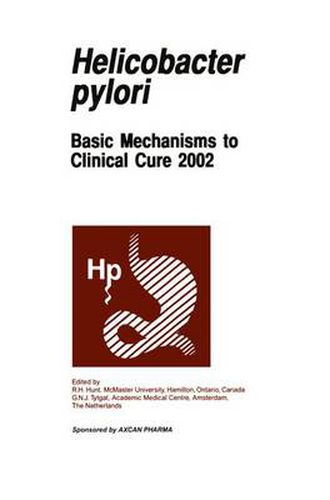Readings Newsletter
Become a Readings Member to make your shopping experience even easier.
Sign in or sign up for free!
You’re not far away from qualifying for FREE standard shipping within Australia
You’ve qualified for FREE standard shipping within Australia
The cart is loading…






This title is printed to order. This book may have been self-published. If so, we cannot guarantee the quality of the content. In the main most books will have gone through the editing process however some may not. We therefore suggest that you be aware of this before ordering this book. If in doubt check either the author or publisher’s details as we are unable to accept any returns unless they are faulty. Please contact us if you have any questions.
The fifth meeting in the successful series Helicobacter pylori: Basic Mechanisms to Clinical Cure took place in Maui, Hawaii, November 2002. The meeting focused on all aspects of contemporary H. pylori research. Internationally acclaimed basic and clinical researchers explored, in depth, the novel information across the spectrum of H. pylori infection, the characteristics of the organism, the inflammatory and tissue modifying consequences, the overall impact of this infection on a global scale, and new therapeutic possibilities. H. pylori infection, both in man and in the laboratory animal, has become a standard model to investigate fundamental problems in biology, such as microbial-host interactions, intracellular signalling, modulation of inflammation, mucosal atrophic metaplasia, and microbial resistance, to name just a few. The issues addressed in this book are grouped according to their leading theme. Topics include: the new Helicobacters, strain differences of H. pylori and their consequence on microbial-host interactions and the effects of H. pylori infection on the gastric mucosa. The role of H. pylori is explained in relation to: gastric carcinogenesis; gastroesophageal reflux disease; dyspepsia and long-term acid suppression. Eradication therapies are reviewed with respect to their global consequences and problems. The last two sections are devoted to a global update on therapeutic indications and finally on priorities for further research.
$9.00 standard shipping within Australia
FREE standard shipping within Australia for orders over $100.00
Express & International shipping calculated at checkout
This title is printed to order. This book may have been self-published. If so, we cannot guarantee the quality of the content. In the main most books will have gone through the editing process however some may not. We therefore suggest that you be aware of this before ordering this book. If in doubt check either the author or publisher’s details as we are unable to accept any returns unless they are faulty. Please contact us if you have any questions.
The fifth meeting in the successful series Helicobacter pylori: Basic Mechanisms to Clinical Cure took place in Maui, Hawaii, November 2002. The meeting focused on all aspects of contemporary H. pylori research. Internationally acclaimed basic and clinical researchers explored, in depth, the novel information across the spectrum of H. pylori infection, the characteristics of the organism, the inflammatory and tissue modifying consequences, the overall impact of this infection on a global scale, and new therapeutic possibilities. H. pylori infection, both in man and in the laboratory animal, has become a standard model to investigate fundamental problems in biology, such as microbial-host interactions, intracellular signalling, modulation of inflammation, mucosal atrophic metaplasia, and microbial resistance, to name just a few. The issues addressed in this book are grouped according to their leading theme. Topics include: the new Helicobacters, strain differences of H. pylori and their consequence on microbial-host interactions and the effects of H. pylori infection on the gastric mucosa. The role of H. pylori is explained in relation to: gastric carcinogenesis; gastroesophageal reflux disease; dyspepsia and long-term acid suppression. Eradication therapies are reviewed with respect to their global consequences and problems. The last two sections are devoted to a global update on therapeutic indications and finally on priorities for further research.